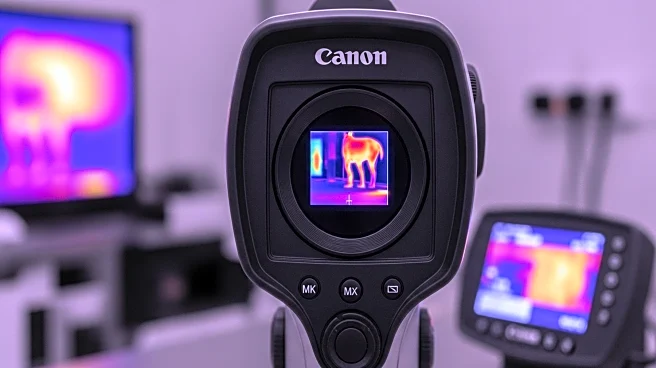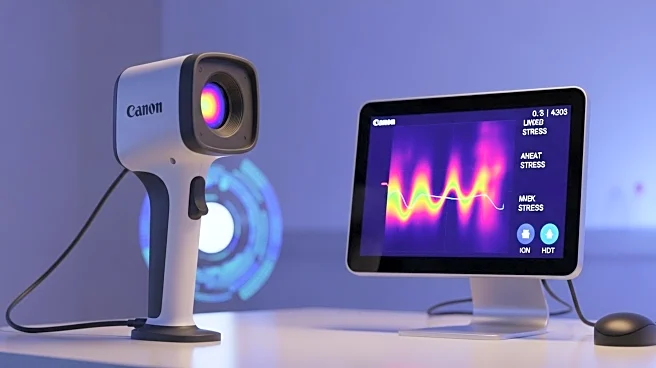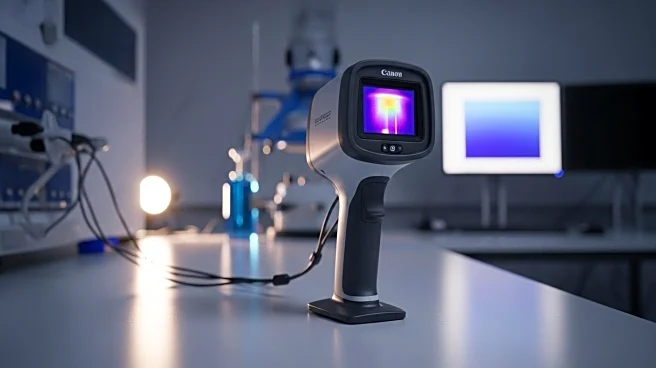What's Happening?
Researchers at the University of Sussex are employing thermal cameras to study stress levels by observing changes in facial blood flow. The study reveals that stress causes a drop in the temperature of a person's nose, which can be used as a measure of stress levels and recovery. This method is considered a potential 'game changer' in stress research due to its non-invasive nature. The research involved stress tests on volunteers, where participants experienced a nasal temperature drop during stressful tasks, such as impromptu speeches and complex arithmetic challenges. The technique is also being adapted for use in sanctuaries for great apes, aiming to improve the wellbeing of animals rescued from traumatic circumstances.
Why It's Important?
The development of non-invasive methods to measure stress has significant implications for mental health research and treatment. By providing an objective measure of stress regulation, this technique could help identify individuals at risk of anxiety or depression. Additionally, its application in monitoring stress in non-verbal populations, such as infants or individuals with communication difficulties, could enhance care and intervention strategies. The extension of this research to great apes highlights the potential for cross-species applications, offering insights into animal welfare and rehabilitation practices.
What's Next?
The researchers plan to demonstrate this thermal stress-measuring method at the New Scientist Live event in London. Further development and testing in ape sanctuaries are underway, with the goal of refining techniques to reduce stress and improve animal welfare. The team is exploring the calming effects of visual stimuli, such as videos of baby chimpanzees, on adult apes. Continued research may lead to broader applications in both human and animal stress management.
Beyond the Headlines
This research underscores the interconnectedness of human and animal welfare, suggesting that advancements in understanding human stress responses can benefit animal care practices. The ethical dimension of using technology to improve the lives of rescued animals is significant, as it reflects a growing commitment to animal rights and rehabilitation.












